Welcome to the lush world of indoor plant styling, where every leaf and tendril adds a breath of fresh air to your living spaces. Whether you’re a budding enthusiast or a seasoned home decorator, “12 Creative Indoor Plant Styling Tips” is your ticket to transforming ordinary rooms into vibrant, living works of art.
In this guide, you’ll discover innovative ideas that not only enhance the aesthetic appeal of your home but also promote well-being and tranquility. These practical tips provide the tools you need to seamlessly integrate greenery into your decor, boosting your confidence to experiment and create stunning visual harmony.
Imagine the joy of curating your personal indoor oasis, where each plant is perfectly styled to reflect your unique taste and personality. With our expert guidance, you’re just steps away from reaping the rewards of a beautifully styled home that feels both inviting and invigorating.
Cluster Plants for Visual Impact
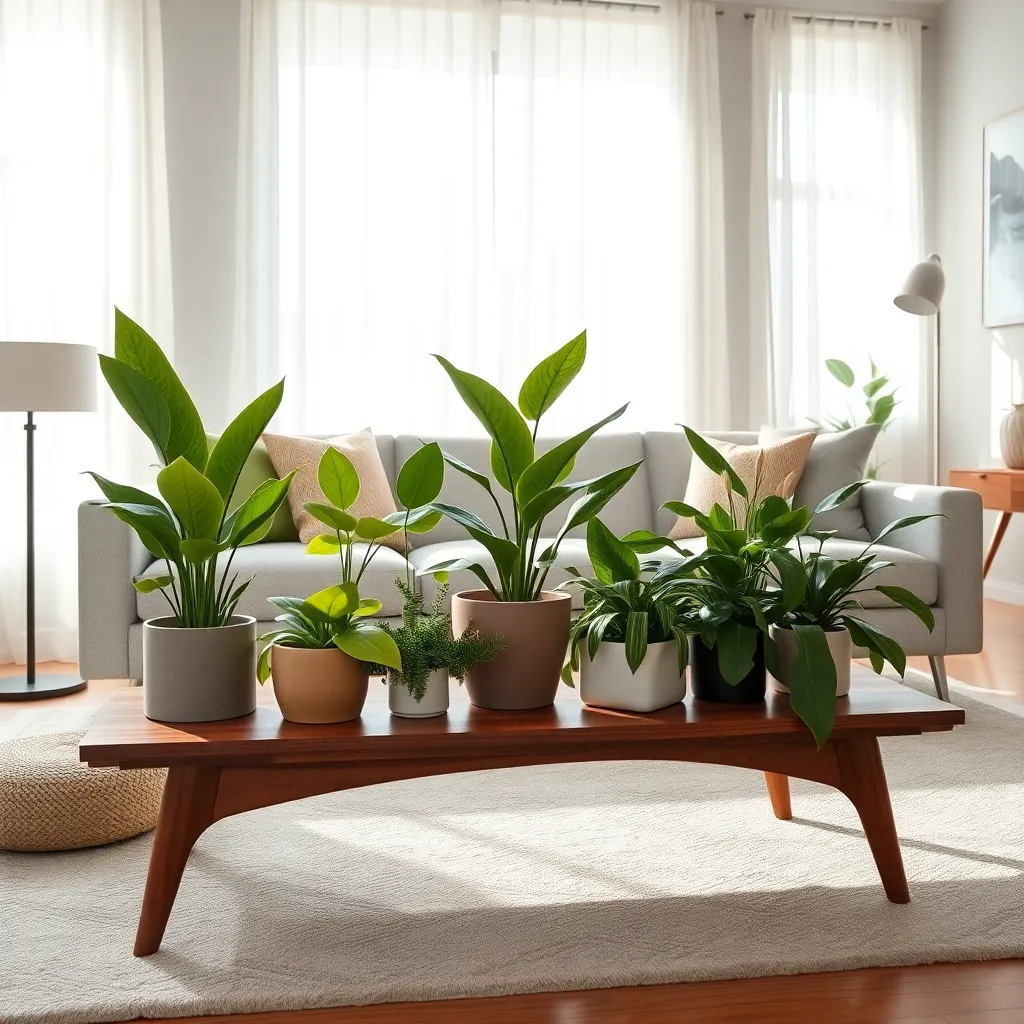
To create a striking visual impact with plants, consider grouping them in clusters rather than scattering them throughout the room. This technique not only draws the eye to a specific area but also creates a lush, cohesive look that can make your space feel more vibrant.
When choosing plants for clustering, think about varying heights and textures to add depth to your arrangement. For example, you could pair a tall fiddle leaf fig with a trailing pothos and a compact snake plant to achieve a dynamic contrast.
Placement is key in ensuring your cluster is both attractive and practical. Position your plants near a natural light source, like a window or glass door, and use plant stands or shelves to elevate smaller plants, allowing for a more layered effect.
For those with limited floor space, consider wall-mounted planters or hanging baskets to incorporate more greenery without cluttering surfaces. This not only maximizes your space but also adds a unique vertical element to your design.
Layer Different Plant Heights
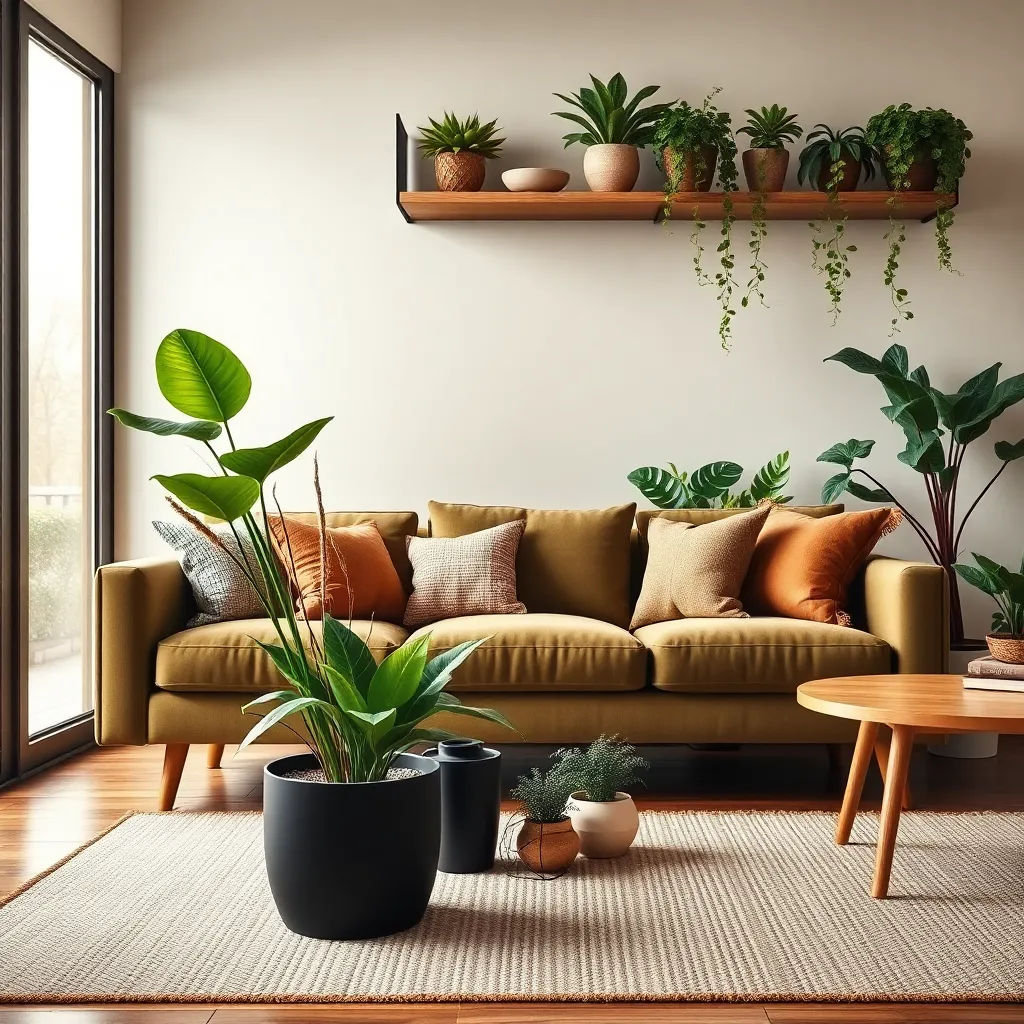
To create a dynamic and visually appealing indoor plant display, consider layering plants of different heights. This technique adds depth and interest, transforming a dull corner into a lush focal point. Start by selecting a variety of plants that naturally grow to different heights. Place taller plants in the background and shorter ones in the foreground to create a cascading effect.
Choose containers that complement the overall aesthetic of your room. For a modern look, opt for sleek, metallic pots, while rustic spaces might benefit from earthy terracotta. Experiment with plant stands to elevate smaller plants and add another dimension of height. This approach not only enhances the visual appeal but also ensures each plant receives adequate light.
Incorporate plants with different leaf shapes and textures to further enhance the layered effect. Pair large, broad-leafed species with delicate ferns or trailing vines for contrast. Consider color when selecting plants; variegated leaves or blooms can introduce pops of color and prevent the arrangement from appearing monotonous.
Advanced decorators might integrate lighting into their plant displays. Use spotlights or LED strips to highlight specific plants, adding drama and attention to the overall arrangement. By carefully considering plant placement and the interplay of light and shadow, you can create a truly stunning indoor garden that feels vibrant and alive.
Use Hanging Planters Creatively
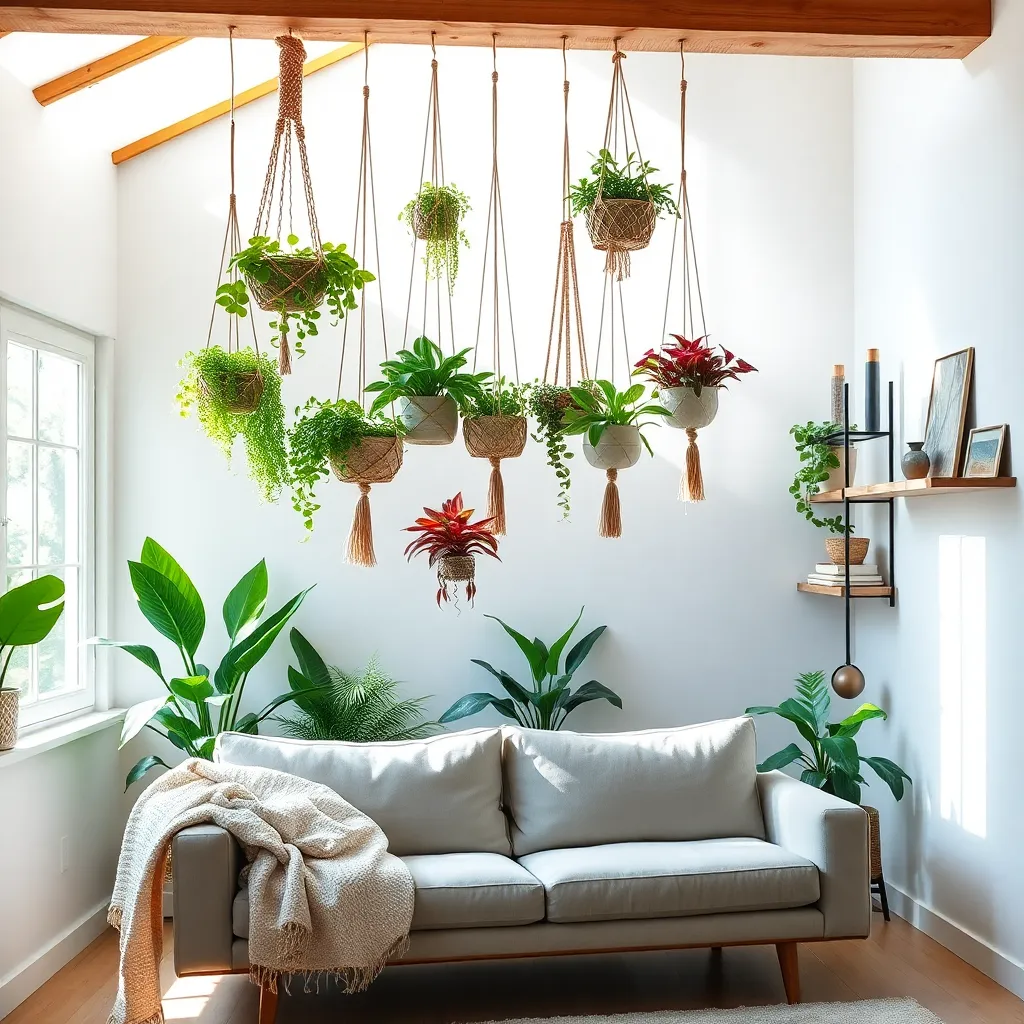
Incorporating hanging planters into your interior design can transform any room into a lush sanctuary. To begin, choose planters that complement your existing decor—think ceramic for a modern touch or woven baskets for a bohemian vibe.
Consider the height and location of your hanging planters to maximize visual impact. Suspending them at varying heights can create a dynamic look, especially when layered with wall art or positioned near a large window for natural light.
For beginners, start by hanging planters in high-traffic areas like the kitchen or living room where they can be easily admired. Advanced decorators might experiment with positioning them in unexpected places, such as above a bathtub or in a walk-in closet, to add a unique and personal touch.
Additionally, choose plants that thrive well indoors and consider your home’s lighting conditions. Trailing plants like pothos or string of hearts are excellent choices, as they cascade beautifully and are generally low maintenance.
Mix Pot Textures and Colors
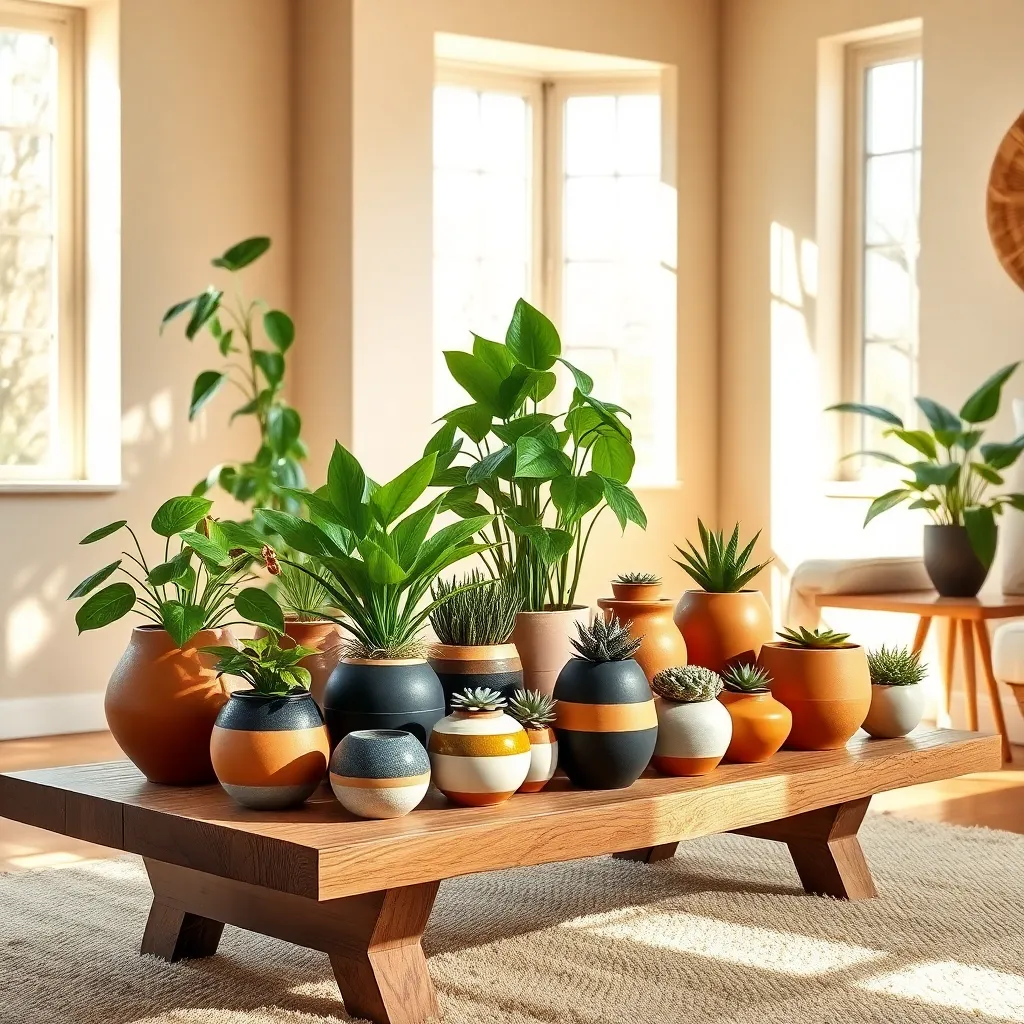
Creating a dynamic display with indoor plants involves mixing pot textures and colors effectively. Choosing pots with different finishes like matte, glossy, or metallic can add depth to your plant arrangement, giving it a more sophisticated look. This technique is great for both modern and traditional settings, offering versatility in design.
To start, select a color palette that complements your room’s decor. Consider using a combination of neutral and bold hues to create a balanced yet eye-catching display. For instance, pairing a sleek black pot with a vibrant teal one can add a striking contrast that enhances the visual appeal.
When arranging your pots, vary their sizes and shapes to introduce an element of surprise. Placing a tall, cylindrical pot next to a short, round one creates an interesting dynamic. Position taller pots toward the back or corners to frame the arrangement, and use smaller ones in front to lead the eye through the display.
For those with a more advanced touch, experiment with layering different materials like ceramic, terracotta, and metal. This not only adds texture but also highlights the unique qualities of each pot. Ensure that each material complements the plant it holds; for instance, terracotta pairs beautifully with succulents, enhancing their earthy charm.
Incorporate Plants on Shelves
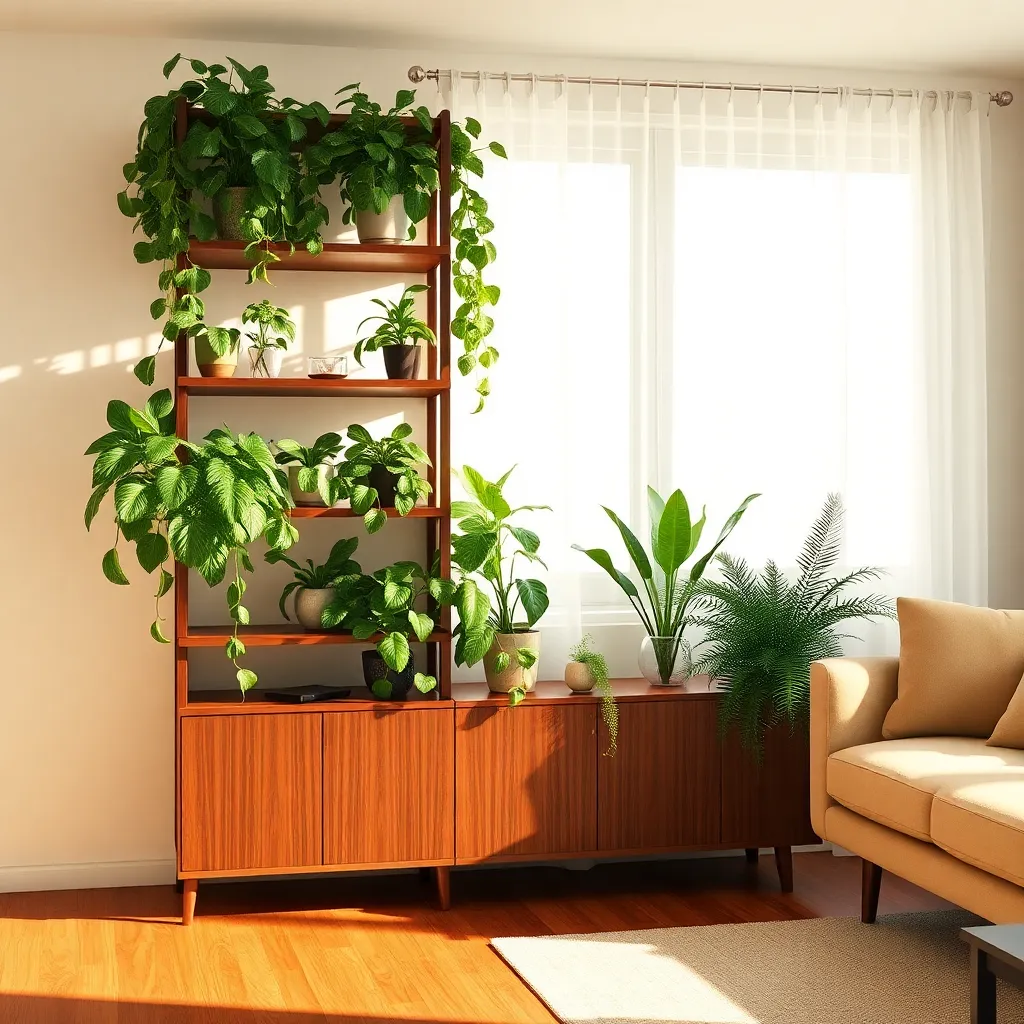
Adding plants to your shelves can instantly bring life and color to any room. Start by selecting a variety of plant sizes to create a dynamic and layered look on your shelves.
For beginners, consider using hardy plants like pothos, snake plants, or succulents that require minimal maintenance. These plants thrive in indirect light and can adapt to various indoor conditions, making them ideal for shelf styling.
To create visual interest, mix and match pots made from different materials such as ceramic, terracotta, and metal. Opt for pots in complementary colors that enhance your existing decor palette, creating a cohesive look.
More advanced decorators might experiment with cascading plants like string of pearls or ivy, which can elegantly drape over the edges of shelves. Position these plants on higher shelves to take full advantage of their trailing nature, adding a sense of movement and flow to the space.
Create a Statement Plant Corner
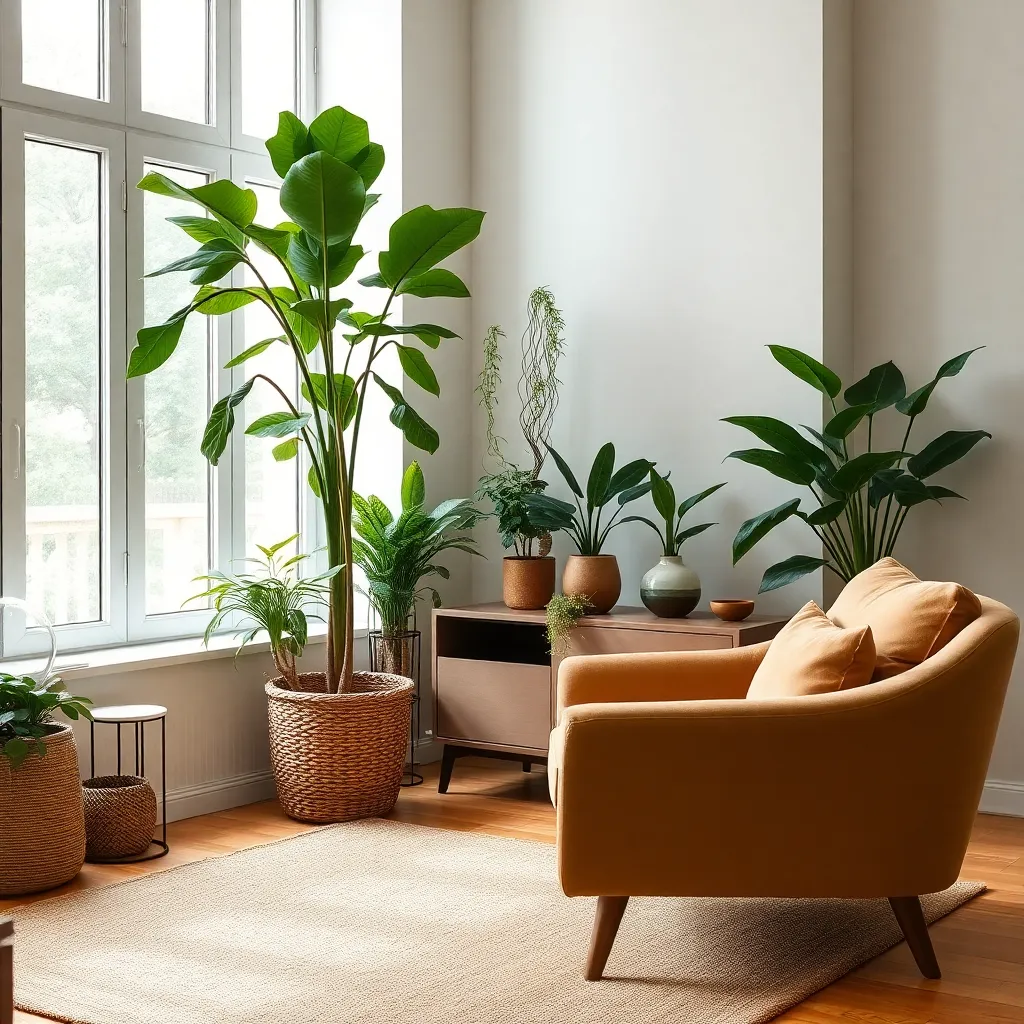
Creating a statement plant corner is an excellent way to infuse life and vibrancy into your space. Start by selecting a variety of plants that vary in height and texture to create visual interest, such as a towering fiddle leaf fig paired with cascading pothos.
Position your plants in a sunny corner for optimal growth, ensuring each has adequate room to breathe and thrive. Utilize a mix of planters in different materials and colors—like ceramic, metal, and woven rattan—to add depth and personality to the setup.
For beginners, consider starting with low-maintenance plants like snake plants or ZZ plants, which are forgiving and adaptable. Advanced decorators can experiment by incorporating a small indoor tree or a collection of tropical plants for a lush, exotic feel.
Elevate your plant display by incorporating stylish plant stands or hanging planters to add height and dimension. A strategically placed accent chair or a cozy floor cushion nearby can transform this corner into a serene retreat for reading or relaxation.
Style with Plant Stands
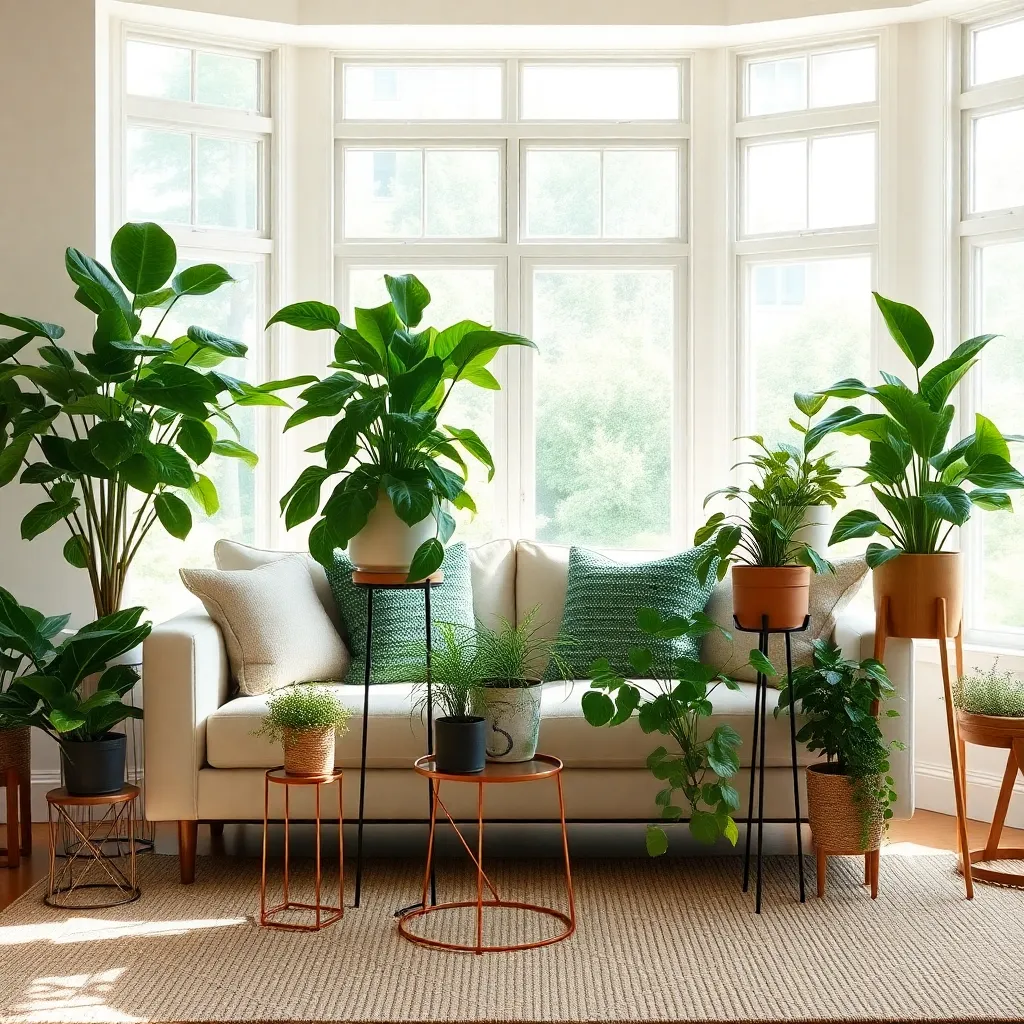
Plant stands are an elegant way to add height and dimension to your indoor plant arrangements. Opt for stands made from materials like wood or metal to suit various interior styles, whether you’re aiming for a rustic or industrial look.
Consider using plant stands to create tiered displays, allowing each plant to shine individually while contributing to a layered look. Choose stands of varying heights to create visual interest and enhance the room’s depth, making the space feel larger.
For a cohesive aesthetic, match the color of your plant stands to existing furniture or decor elements. If you have a mid-century modern theme, seek out stands with clean lines and natural wood finishes to maintain consistency.
Advanced decorators might experiment with grouping plant stands in clusters of three for a dynamic visual effect. Use this technique in corners or alongside furniture to create a natural flow and seamless integration with your existing decor.
Arrange Plants by Light Needs
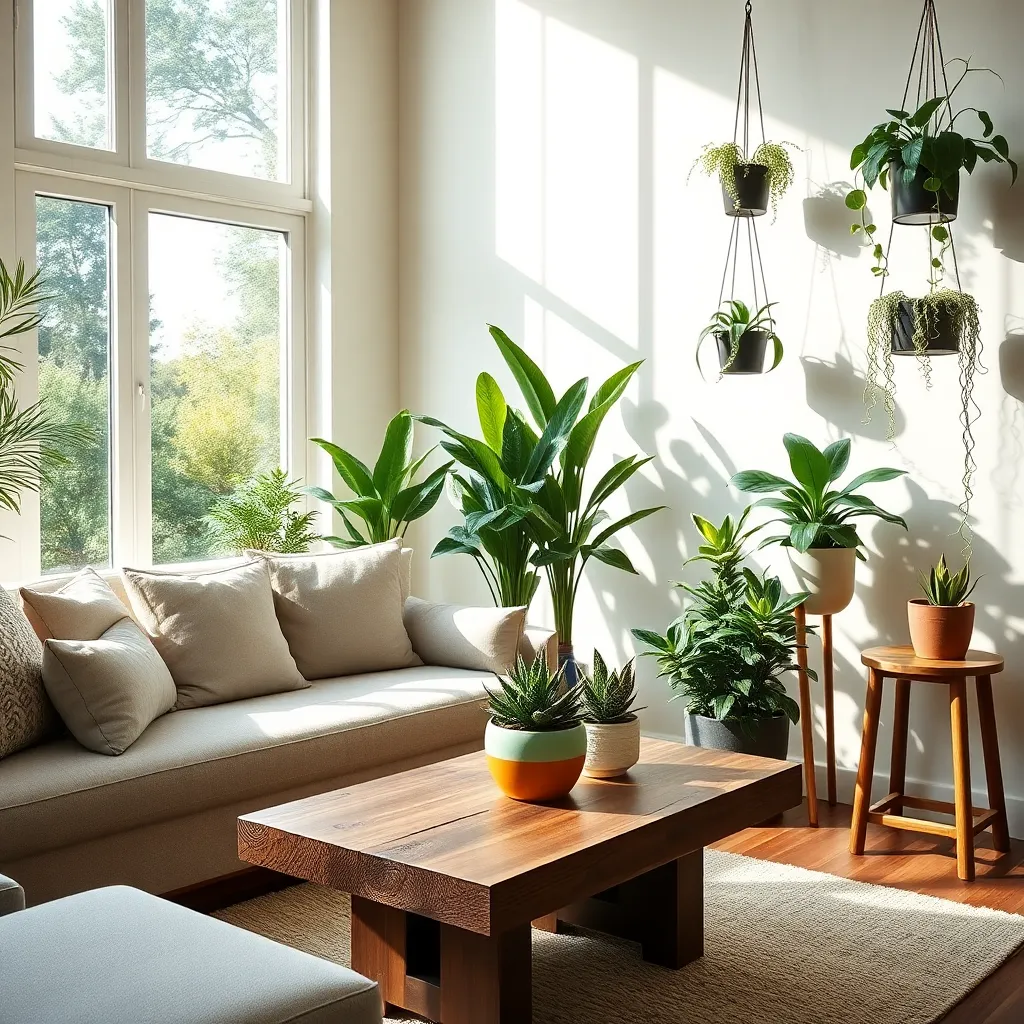
To create a thriving indoor garden, begin by categorizing your plants according to their light needs. Place high-light plants like succulents and cacti near south- or west-facing windows where they can soak up the sun.
Mid-light plants, such as ferns and peace lilies, do well in east-facing windows or bright, indirect light areas. Use sheer curtains to diffuse direct sunlight, ensuring these plants receive the right amount of light without getting scorched.
For low-light plants like snake plants and pothos, position them in shaded corners or rooms with minimal natural light. Consider using artificial lighting like LED grow lights to supplement natural light, ensuring your plants stay healthy even in dim spaces.
When arranging plants, think about the visual impact as well as their light needs. Layer different plant heights to create depth and interest, placing taller plants in the back and shorter ones in the front. This not only maximizes light exposure but also enhances the aesthetic appeal of your space.
Combine Plants with Artwork
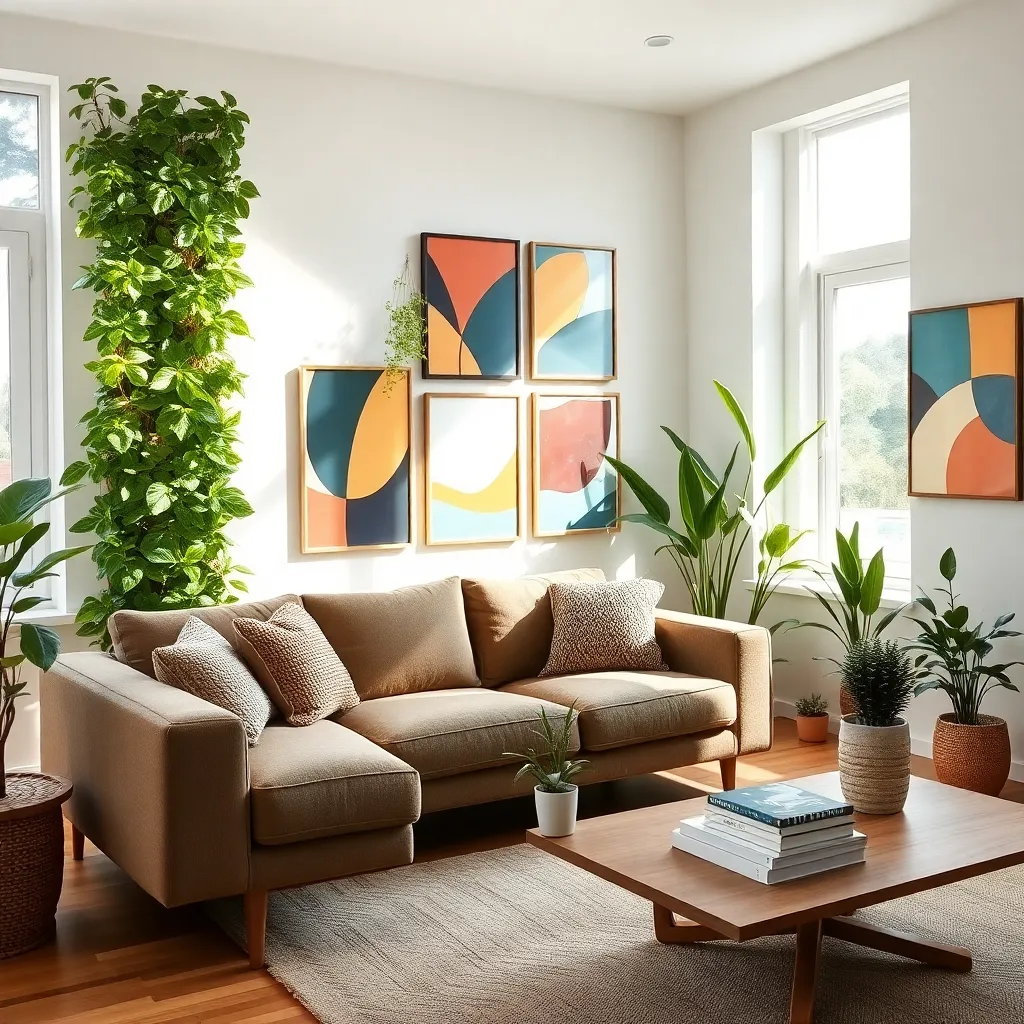
Incorporating plants with artwork can create a dynamic and inviting space in any room. Start by choosing artwork that complements the colors of your plants, such as a piece featuring greens and earth tones if your plants are predominantly leafy.
For a cohesive look, try placing a tall plant beside a large artwork to balance the visual weight. Use the plant’s height to draw the eye upward, creating an elegant flow from the plant to the artwork.
Smaller plants can be used to accentuate art pieces on shelves or mantels. Arrange these plants in clusters around the artwork to enhance its visual appeal, ensuring they don’t obstruct the view.
Advanced decorators might want to experiment with texture by pairing plants with artwork that has a similar tactile quality, such as a woven tapestry or textured painting. This technique emphasizes the depth and dimension of both the plant and the art, making the space feel layered and rich.
Use Plants as Room Dividers
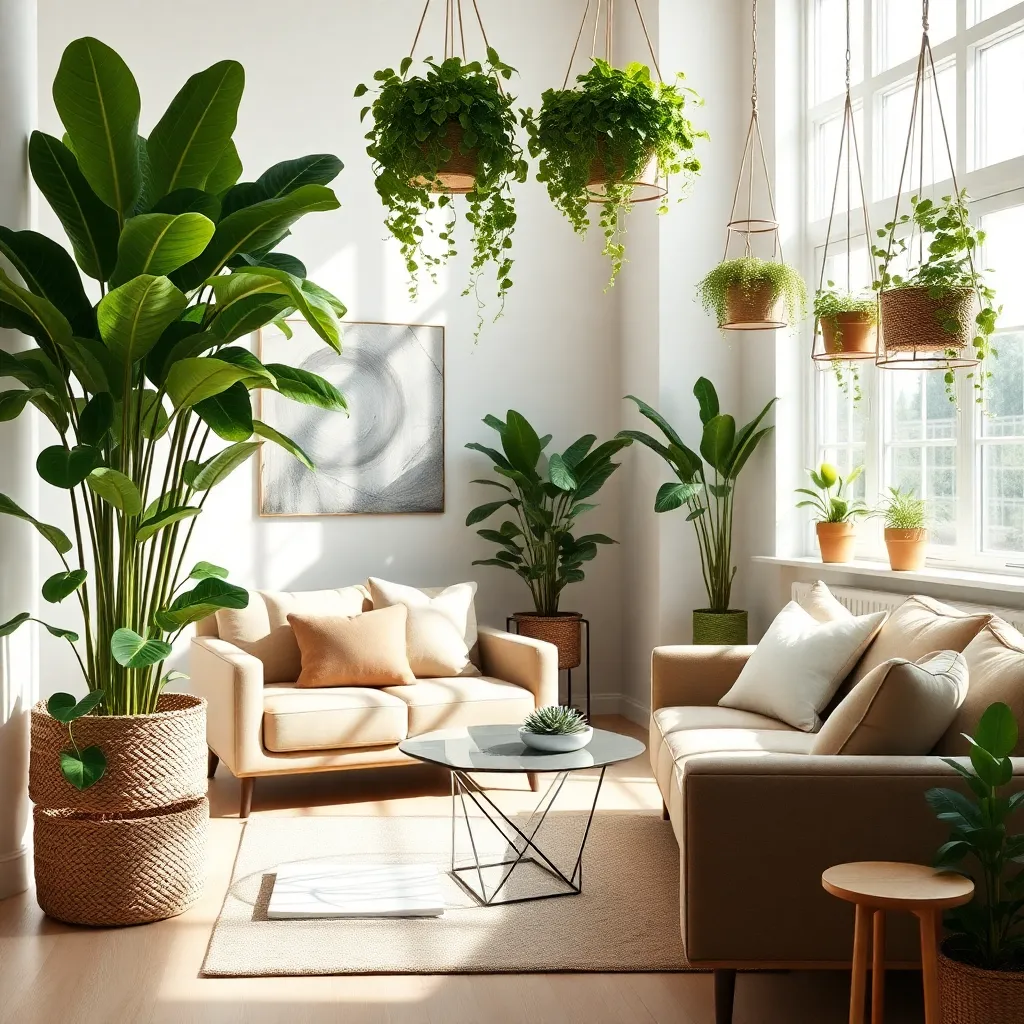
Plants can serve as natural room dividers, offering a stylish and functional way to partition spaces without the need for walls. Consider using tall, lush plants like fiddle leaf figs or bamboo palms to create a distinct separation while maintaining an open, airy feel in your home.
Positioning a row of plants on a low shelf or using a tiered plant stand can effectively delineate areas such as the living room from the dining space. For an advanced touch, choose planters in complementary colors or materials that match your existing decor, ensuring a cohesive look.
Incorporate different plant heights and leaf textures to add depth and interest to your divider. Combining plants with varying shades of green can create a dynamic visual effect, enhancing the overall aesthetic of the space.
For smaller spaces, hanging planters can be an excellent solution to define areas without taking up floor space. Experiment with trailing plants like pothos or string of pearls to add a vertical dimension, making the most of your available area.
Accent Tables with Plant Arrangements

Accent tables offer a versatile canvas for showcasing your beloved plants, and they can effortlessly enhance the ambiance of any room. Choose a table that complements the style of your space—whether it’s a sleek, modern design or a rustic, vintage piece—to create a harmonious look.
Placing your accent table near a natural light source can help your plants thrive, while also drawing attention to this stylish vignette. Pair taller plants like fiddle leaf figs or snake plants with shorter varieties such as succulents or ferns to add visual interest and dimension to your display.
Consider using a mix of pots in various materials and finishes—think ceramic, terracotta, or metal—to add texture and depth to your plant arrangement. For a cohesive look, stick to a complementary color palette that resonates with the rest of your decor, such as whites and greens for a fresh, clean aesthetic.
For those ready to take their plant styling to the next level, incorporate decorative elements like books, candles, or small sculptures alongside your plants. Layering different decor pieces creates a dynamic and engaging display that can become a focal point in your living room or entryway.
Highlight with Underlighting Effects
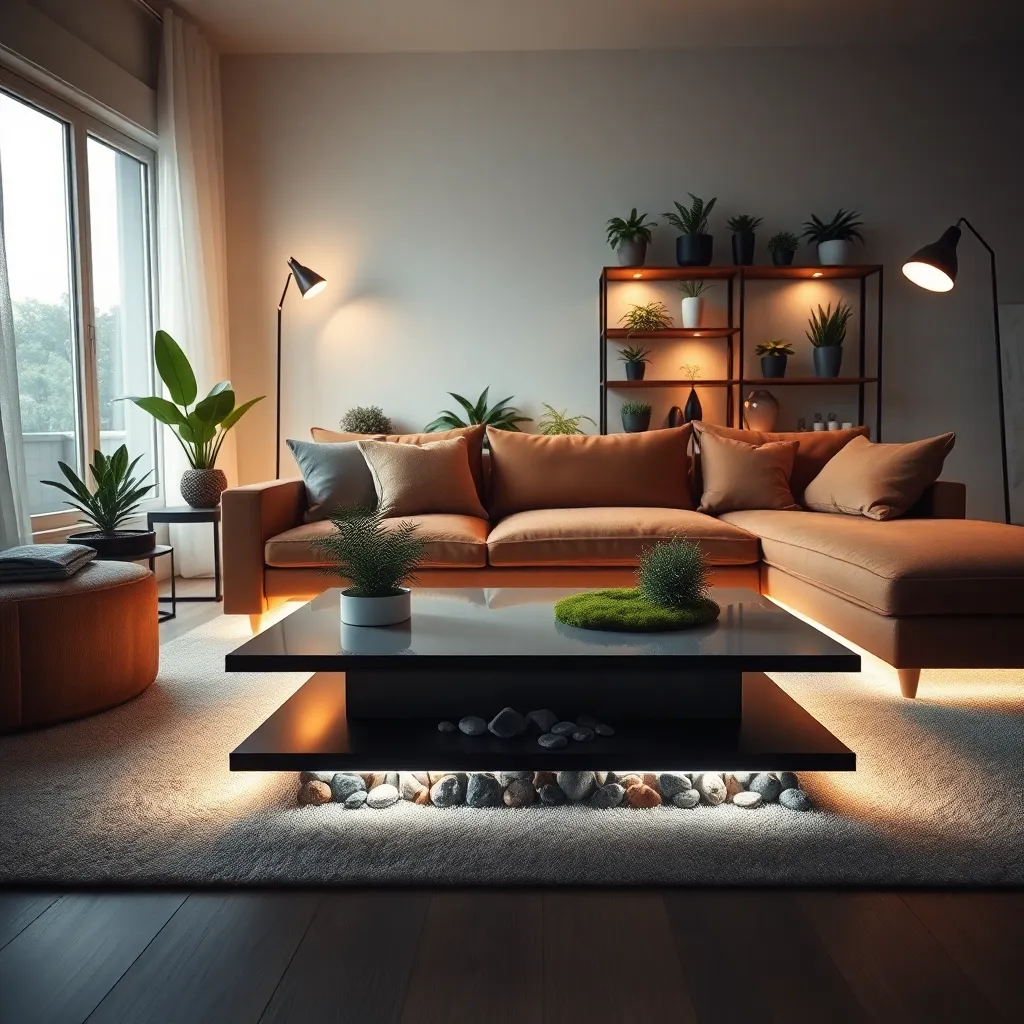
Underlighting effects can dramatically transform how your indoor plants are perceived, adding depth and dimension to your space. By positioning LED strip lights or puck lights beneath plant stands or shelves, you create a soft glow that highlights the foliage in a subtle yet striking manner.
Consider using warm white lights to create a cozy ambiance, which complements most plant varieties and blends well with natural wood tones. For a more contemporary look, choose cool white or colored LED lights that can make your plants pop against a minimalist decor background.
Placement is key when employing underlighting; ensure that lights are discreetly tucked away to prevent any direct glare, allowing the focus to remain on the plants themselves. Experiment with different angles and intensities to find the perfect balance that enhances your plant display without overwhelming the room.
For those looking to take their plant styling to the next level, consider incorporating smart lighting systems that allow you to adjust brightness and color via a smartphone app. This gives you the flexibility to change the mood and highlight different plants at various times, providing a dynamic and interactive element to your interior design.
Conclusion: Growing Success with These Plants
In our journey through ’12 Creative Indoor Plant Styling Tips,’ we’ve explored how nurturing relationships can be as rewarding as tending to a beautiful indoor garden. We’ve delved into creating a harmonious environment, understanding the importance of balance, and recognizing the need for patience and attentiveness. Much like plants, relationships thrive with the right amount of care, communication, and creativity. We’ve discussed how to bring vibrant energy into your spaces and relationships, the impact of thoughtful placement, and the joy of sharing this growth with others.
Now, it’s time to put these insights into action. Take a moment today to implement one of these styling tips in your home, and consider how these principles can also enrich your personal connections. As you cultivate your indoor oasis, let it be a reminder of the love and effort required to nurture meaningful relationships.
Don’t let this valuable guidance slip away—save or bookmark this article now for future inspiration and reference. Remember, just as your indoor garden can flourish with dedication, so too can your relationships. With creativity and commitment, you’re on the pathway to relationship success, one thoughtful step at a time.
